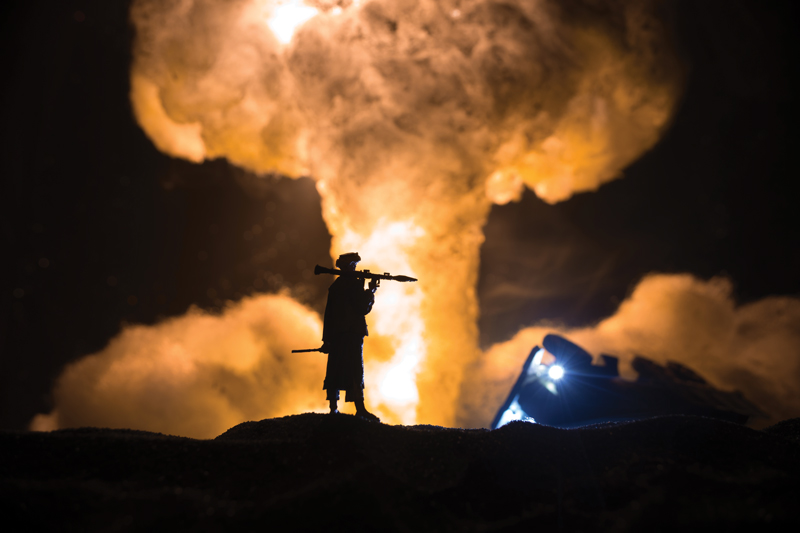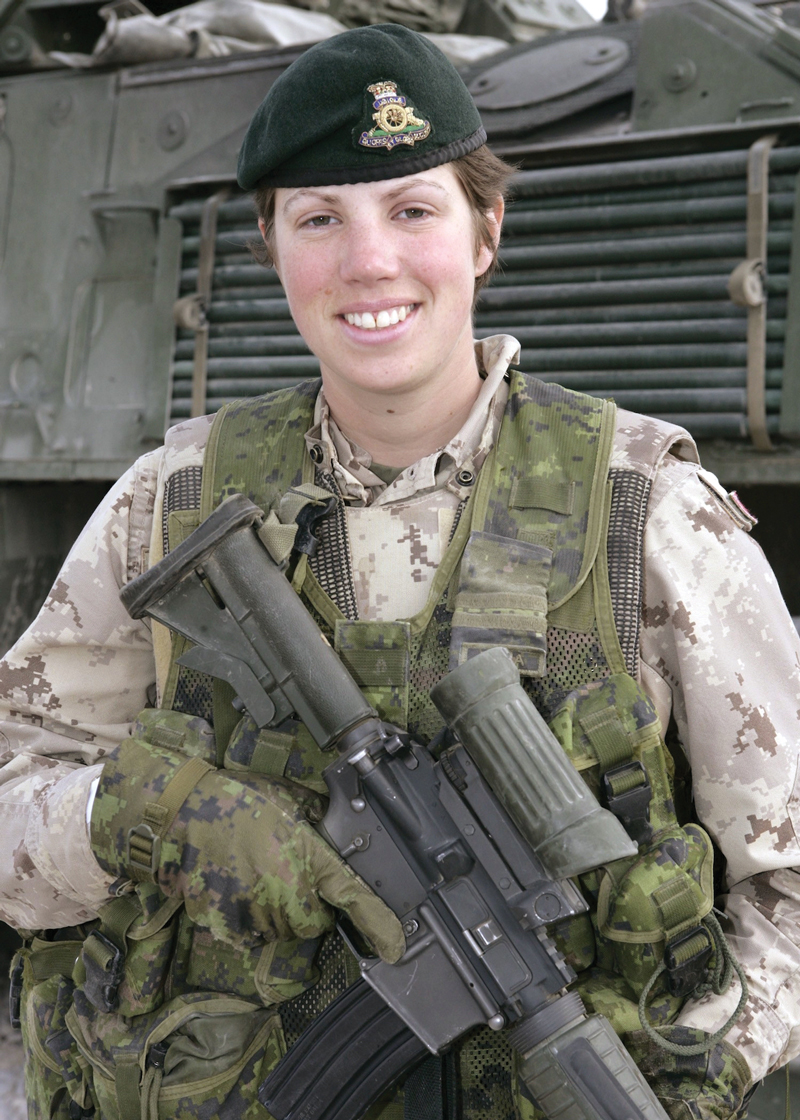The first Canadian female officer to lead troops into battle encounters a deadly ambush in Afghanistan
“We have a burden of responsibility to make the world a better place.”—Captain
Nichola Goddard
NICHOLA GODDARD
“I’m proud of you guys. You got to do it, and you did it very well,” Captain Nichola Goddard told her three-person forward observation officer artillery team over the personnel carrier’s intercom. It was May 17, 2006. Supporting about 200 Task Force Orion Canadian and Afghan National Army (ANA) troops, the quartet had just concluded a fierce engagement with Taliban forces in Afghanistan.
Goddard’s praise typified her modest nature, notable that day as she had also marked several personal milestones. She’d become the first female Canadian officer to lead troops into combat and the first officer since the Korean War to direct artillery and other weapons against enemy targets.
The action took place in Bayanzi village in Panjawii district and foiled a large-scale Taliban buildup leading to an attack on Kandahar City. Throughout the day, Goddard had calmly and accurately directed 1st Regiment, Royal Canadian Horse Artillery 155-millimetre guns and American Apache helicopters against Taliban fighters in and around the town.
Goddard had become the first female Canadian officer to lead troops into combat.
Goddard entered the military after high school. “Free education and a job for five years after graduation,” her mother said of her daughter’s motivation for the move. Goddard soon decided that soldiering had a far deeper purpose.
Shortly after deploying to Afghanistan in early 2006, she wrote in a letter: “We have a burden of responsibility to make the world a better place for those born into far worse circumstances…my current role in Afghanistan is part of that.”
In moments of doubt about the mission arising from the mixed Afghan reaction to the presence of Canadian soldiers, and particularly a female officer, Goddard still insisted, “I just have to believe we are doing a good thing here.”
As dusk fell in Bayanzi on May 17, Goddard’s eight-wheel light armoured vehicle (LAV) and other elements of the Canadian-ANA convoy moved along narrow village streets to the western outskirts from which the insurgents had been withdrawing. The Taliban seemed in full retreat.
Goddard was in the open turret hatch when rocket-propelled grenades and a spray of AK-47 rounds struck the vehicle. The hull was pierced in several places and a piece of shrapnel struck Goddard in the back of the head. The 26-year-old died instantly, achieving another, albeit unfortunate, mark: Canada’s first female soldier killed in combat. She was also the country’s highest-ranking officer lost in Afghanistan.
Goddard is buried in the National Military Cemetery at Beechwood in Ottawa. On Oct. 27, 2006, she was awarded the Meritorious Service Medal.
The Taliban

When the traditional Afghanistan fighting season began in the spring of 2006, the Taliban brought more numbers to the battlefield and demonstrated greater tactical sophistication than they had previously.
While still using improvised explosive devices (IEDs), they also deployed rifles, machine guns, rocket-propelled grenades (RPGs), mortars and rockets. Their command-and-control proved capable of selective targeting and countering coalition force tactics.
Having studied Iraq’s insurgency, their new approach included better ambushes and IED placement, and the use of suicide attacks. In 2006, one American intelligence officer stated: “You get a large enough [coalition] force and the enemy…disappear, get a small enough force and [they] come out from behind every rock or hilltop.”
It was this reinvigorated Taliban that Task Force Orion faced at Bayanzi on May 17. Instead of breaking away once Canadian and ANA forces deployed, the Taliban stood their ground. As the Canadian-ANA convoy approached the village at about 10 a.m., more than a hundred women, children and elderly men fled.
A few minutes later, with Bayanzi largely clear of civilians, the Princess Patricia’s Canadian Light Infantry platoons came under small arms and RPG fire. Back in his tactical headquarters six kilometres away, Orion’s commander Lieutenant-Colonel Ian Hope realized, “they’re not running away.”
The Taliban ambushed the entire battle group throughout the village.
Even as Goddard directed a swarm of Apache helicopters against Taliban targets, the enemy attempted to return fire. During the two-hour fight, Goddard employed artillery, the helicopters, fighter jets and tactical information, all while moving her LAV along a two-kilometre-wide battlefront.
When the fighting subsided, the Taliban seemed to be retreating. But they were not. The Taliban ambushed the entire battle group throughout the village. Hope estimated that at least 100 enemy combatants were involved. Then suddenly he heard over the radio, “My Sunray’s down! My Sunray’s down!” He realized the officer was Goddard.
The Canadians lashed back with M777 155-millimetre artillery and bombs dropped by an American B-1B bomber that repelled the ambush. When the fight for Bayanzi ended, 40 Taliban were confirmed killed, 20 had been taken prisoner and one ANA soldier had also been killed.
For the next three weeks, the Canadians were heavily engaged throughout the district. “There are hundreds of Taliban here,” reported Hope. Unable to break the Canadians, however, they then returned to lower-scale insurgency tactics.
“They’re not running away.” —Lieutenant-Colonel Ian Hope
Advertisement














